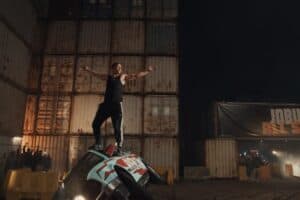New generation of rally cars' onslaught starts with Monte Carlo season opener.

First run in 1911, the Monte Carlo Rally when competitors started from different European cities before gathering in Monaco, a format that lasted for many years and over the years the event has seen a fair share of drama, particularly in 1966.
Probably the most controversial year in the rally’s history, as officials disqualified the first four finishers, three Mini-Coopers and a Ford Cortina, for an alleged headlight regulation infringement, a very unpopular decision.
Tomorrow’s start in Monaco, marks the 90th running of the Monte Carlo Rally and the beginning of a new era in WRC history as the sport moves to a more sustainable future with the introduction of new RC1 Plug-In Hybrid cars, replacing previous seasons WRC premier class vehicles, 11 RC1’s are entered.
WRC Promoter managing director Jona Siebel said, “It’s fitting these ground-breaking changes should be incorporated for the WRC’s 50th season.”
The Plug-In Hybrid Rally1 cars are built on an upgraded safety cell chassis, the competition proven 1.6-litre turbocharged engine now runs on 100 per cent fossil-free fuel as part of the FIA and WRC Promoter’s commitment to a greener future.
The internal combustion engine is complemented by a 100 kW electric motor which is coupled to a 3.9-kWh battery, this combination raises the peak performance to more than 373 kW (500 hp) while reducing harmful emissions.
Following testing in the Monte Carlo area, drivers reported the cars were very quick but handling was not as last year’s WRC cars, all agreed it would be a steep learning curve with many new technological introductions to be mastered by the crews.

It became obvious that time was needed following several off road excursions for some of the top drivers. Craig Breen put his M-Sport Ford Puma into a 15 metre deep culvert, but he was not alone. Elfyn Evan’s damaged the new Toyota GR Yaris, a fate that also befell the Hyundai i20 N of Thierry Neuville during testing.
New cars and new technology will make the first event on the 2022 WRC calendar a real challenge.
The roads are generally dry asphalt, but these conditions might change rapidly as increasing altitude and dropping temperatures could result in snow and ice and a sudden lack of grip.
The correct tyre combination is vital and leads to some strange selections, where else would you find studded rubber on opposite corners of the car, with dry weather asphalt rubber on the other two wheels.
Following Thursday’s 2.29 km shakedown stage, the rally officially starts in the evening from Casino Square when 75 competitors tackle the first two of the 17 special stages covering 296.03 km of the rallies 1 511.47 km total.
The first of the stages is the legendary Col de Turini where huge crowds gather to watch competitors traverse the mountain summit in the La Bollene Vesubie / Moulinet test, the longest of the rally at 23.25 km. Cars return to the Monaco waterfront for the overnight halt.
Friday the field heads north for a further six stages with a tyre change before the afternoon session. There will be no mid-leg service points over the four days. Once out of Monaco the crews will be on their own as they will have to work on their own cars with tools carried in their vehicle until they return to the Monaco service park in the evening.

Saturday moves west to the Alpes-de-Haute-Provence for 92.46 km over fiv stages. Le Fugeret / Thorame-Haute kicks off the day, before a double loop of Saint Jeannet / Malijai and the demanding Saint-Geniez / Thoard, either side of a tyre change in Digne-les-Bains.
Sunday, the final day is back in the Alpes-Maritimes for a further four special stages of 67.26 km. La Penne / Collongues and Briançonnet / Entrevaux are driven twice without service. The second pass of the latter is final stage and the chance to earn bonus points on the Wolf Power Stage, before the finish back in Casino Square.
The Toyota Gazoo Racing Yaris Rally 1’s will be in the hands of Sébastien Ogier with new co-driver Benjamin Veillas, Elfyn Evans and co-driver Scott Martin, Kalle Rovanperä with Jonne Halttunen and Takamoto Katsuta and Aaron Johnstone. Ogier will only run selected events this season, having officially retired, alternating with Esapekka Lappi throughout the season.
Thierry Neuville and co-driver Martijn Wydaeghe head up the Hyundai Shell Mobis WRT trio of i20N Rally 1’s, with Ott Tänak and Martin Järveoja, to be joined by 20 year old Oliver Solberg and co-driver Elliot Edmondson. Solberg will be alternating with Dani Sordo during the year.
M-Sport Ford WRT are coming out fighting this season. New signing Breen and co-driver Paul Nagle join Gus Greensmith with Jonas Andersson and Adrien Fourmaux with Alex Coria in the hot seat.
By all accounts the new Ford Puma Rally 1 looks to be very competitive and has attracted a fourth team for the Monte Carlo, no less than 9 times WRC champion Sébastien Loeb with new co-driver Isabelle Galmiche.
The 2022 Monte Carlo Rally opens a new era for rallying and with teams still struggling to get to grips with the new Plug-In Hybrid Rally 1 cars it could through up some very interesting results, but experience will count and if reliability is there, watch out for a titanic Gallic battle between Ogier and Loeb.






